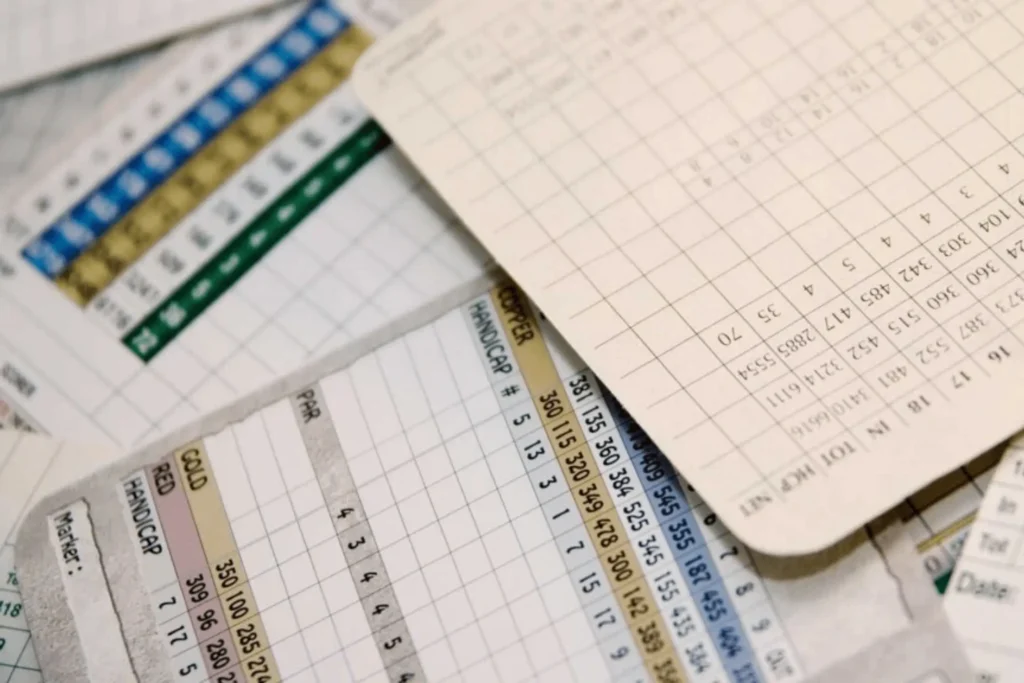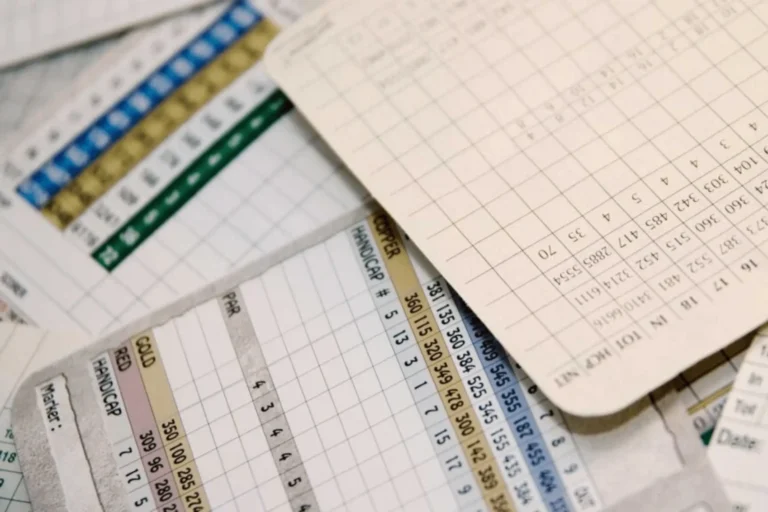Decoding Slope Rating in Golf: A Golfer’s Guide

Understanding slope rating in Golf can significantly enhance a golfer’s game. It serves as a pivotal measure that assesses the difficulty of a golf course for the average bogey player compared to the scratch player. This guide aims to solve the complexities of slope rating. It provides golf enthusiasts with the knowledge needed to appreciate and use this rating to their advantage. By examining its components, impacts on gameplay, and its role in handicapping, players can make informed decisions on course selection. Hence, it improves their performance and enjoyment of the game.
Understanding Slope Rating
Slope Rating is a measure of the difficulty of a golf course from a set of tees for a bogey golfer compared to a scratch golfer. It’s part of the golf course rating system as established by the United States Golf Association (USGA).
The Slope Rating is expressed as a number ranging from 55 to 155, with the average being around 113. A golf course that has a higher slope rating is considered more challenging for the bogey golfer. However, a lower slope rating indicates a relatively easier course.
Factors Influencing Slope Rating
Several factors contribute to the determination of a course’s Slope Rating. These can include the course layout, distance, hazards, green complexity, the ability to recover from wayward shots, and even local weather conditions. Each of these components influences the degree of playing difficulty.
How to measure slop rating:

The Slope Rating formula is a multidimensional calculation that is complex. The USGA created this grading system to assist golfers in figuring out their course handicaps. As a result, it facilitates competition between players of various ability levels.
The course rating and the bogey rating are two crucial pieces of information that are required to determine the slope rating. The expected score of a scratch golfer on the course is represented by the course rating, whereas the expected score of a bogey golfer is represented by the bogey rating. The Slope Rating is then calculated using an equation involving these two numbers.
Equation of slope rating:
Slope Rating = (Bogey Rating – Course Rating) x 113 / Slope Value
The slope value is a constant for each course and can be found on the scorecard. This formula takes into consideration the difficulty of the course and compares it to the standard difficulty level for a course with a slope rating of 113.
How slope rating differs from course rating
There are certain factors based on which it differs from course rating. These are mentioned in the following chart.
| Aspect | Course rating | Slope rating |
|---|---|---|
| Purpose | Measures difficulty for scratch golfers (zero handicap) | Considers challenge for bogey golfers (20 strokes over par) |
| Target Audience | Low-handicapped players | Higher-handicapped players |
| Range of rating | 67 to 77, based on course difficulty for scratch golfers | 55 to 155, with 113 as the average difficulty |
| Rating factors | Yardage, effective playing length, obstacle placement, doglegs, environmental elements | Yardage, elevation, average shot dispersion |
| Determining factors | General length, obstacles, course features | Skill variation between scratch and bogey players |
| Representation | Rounded to the nearest tenth, encompasses various challenges | Non-rounded, reveals nuanced course complexities |
| Insight offered | Difficulty specific to scratch golfers | Understanding of varied challenges across skill levels |
Significance of Slope Rating
Understanding how Slope Rating impacts your game is crucial. By adjusting your scores based on Slope, you can compare your performance on different courses.
- Fair Competition: Slope Rating levels the playing field by taking into account the varying degrees of difficulty across different golf courses. Hence, it allows players of all skill levels to compete fairly.
- Personal Improvement: By understanding the Slope Rating, golfers can gauge their performance improvements over time, irrespective of the course played.
- Strategic Planning: Knowledge of the course’s Slope Rating helps golfers plan their game strategy.
- Adjustments for Handicap Index: An important consideration when determining a golfer’s handicap index is slope rating. It makes sure that depending on the courses they take, participants are neither penalized nor under-challenged.
Practical Examples
Consider two golf courses, each with a par of 72. One has a Slope Rating of 113, while the other is rated at 140. On the 113-rated course, a player with a 15 handicap would receive 15 strokes extra, whereas, on the 140-rated course, that same player would receive 19 strokes due to the more difficult nature of the course.
Conclusion:
In a nutshell, slope Rating plays a crucial role in the game of golf, providing valuable information to players about the difficulty of a course. It allows for fair competition, aids in personal improvement, and helps with strategic planning. Understanding this rating system can greatly enhance a golfer’s experience on the course.
Frequently Asked Questions:
Q: Is a higher Slope Rating always a bad thing?
A: No, it means the course is more challenging for bogey golfers compared to scratch golfers. Some players may enjoy the added difficulty, while others may prefer an easier course.
Q: How often are Slope Ratings updated?
A: Slope Ratings are updated periodically by the USGA to ensure accuracy and reflect any changes made to a course. So, it is always recommended to check for the most recent rating before playing a new course.
Q: Can Slope Rating be used outside of the United States?
A: Yes, Slope Ratings are now used in several countries around the world, including Canada, Mexico, and parts of Europe. It is important to check the specific rating systems used in each country as they may have slight variations.
Q: Does Slope Rating impact professional golfers?
A: No, professional golfers do not use Slope Rating as it is only intended for amateur golfers. They instead use a different course rating system called Course Rating. Slope Rating is designed to help amateur golfers better understand and assess their performance on the course.














2 Comments
Pingback: How to Measure Distance on a Golf Course
Pingback: Top 10 Golf range finders in 2024